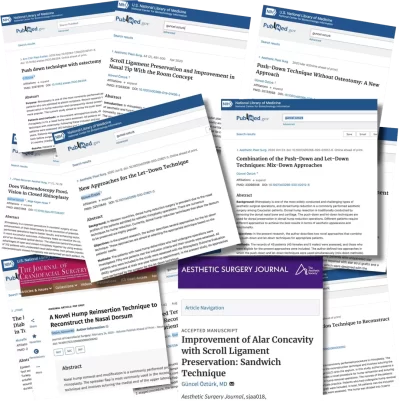

There are two main disadvantages. First, the result is not permanent. Depending on the type of fillers, the duration of action is different. The result can last from one to two years depending on the material and the injection technique. Secondly, the main limitation of the technique is that only volume can be added. If there is a nose reduction, an advanced size bump and excessive curvature, filler injection alone is not enough. Therefore, nasal fillers may not be suitable for every situation, because some defects of the nose cannot be corrected with this method.
Nevertheless, nasal fillers can correct many problems that can be done with surgery. It is a versatile technique and can be applied to different types of nasal anatomies and skin types. It is a good alternative for patients who do not want to undergo surgery, for whom surgery may be too risky for medical or other reasons, or who do not have enough time for the recovery time required by surgery.
The widespread use of nasal fillers is also practiced for patients who have undergone rhinoplasty but need revision rhinoplasty for minor corrections. For such patients, nasal filler injection can be a good option. It can be applied to camouflage imperfections or add volume to areas with tissue loss. Rhinoplasty is a suitable option for any adult who is in good general health and does not have an extreme deformity in the nose.
What is the healing process in nasal filling?
After nasal filler injection, normal life can be continued without interruption. There is no swelling, bruising and no obligation to stay at home to recover. It is one of the aesthetic procedures with the highest patient satisfaction.




Copyright © 2026 Tüm Hakları Saklıdır.
SEO:
